Cloud computing is the availability of resources that are delivered over the internet, which mainly include data storage (cloud storage) and computing power. The resources expand to databases, networking, servers and software.
The idea is that, the databases if availed through a central server over a medium (internet) rather than through a proprietary hard drive, can be accessed by any authorized devices of that server. This achieves the coherence and economies of scale for organizations and business too.
Cloud computing is the preferred choice of many IT infrastructures due to its cost savings, improved manageability, less maintenance and rapid adjusting facility with high computing power. Few examples of cloud computing are Microsoft OneDrive, Amazon web services (AWS) and so on.
Comprehending: Cloud Computing
As said, cloud computing is the ability to access the data and computing power remotely through devices. This makes the companies and business to store the data in the remote cloud that is accessed by many users of the company via internet. These data are stored in a central server, installed and catering the key to the cloud.
The remote access of the cloud can be studied through two basic definitions virtualization and utilization. Virtualization is the act of creating virtual aspects that are not physically present. Here it refers to the virtual devices that are keyed up to the servers. These devices are provided with all the idle computing services and resources, that are picked up for efficiently working on the tasks. Virtualization provides the agility required to speed up IT operations and reduces cost by increasing infrastructure utilization.

Say for instance, a company with plenty of resources and boundless services cannot expect to have all its employees accessed with the resources/services of maybe thousands of gigabytes, everywhere they used to work. But instead, if connected to a cloud that contains all these facilities to cater is choiceless preferable one, making it simpler and viable to work.
The technology is now fetched to any individual too.
Deployment Models:
Cloud computing can be procurable to only a single organization (private) or multiple organization/users (public) or composition of public & private (hybrid).
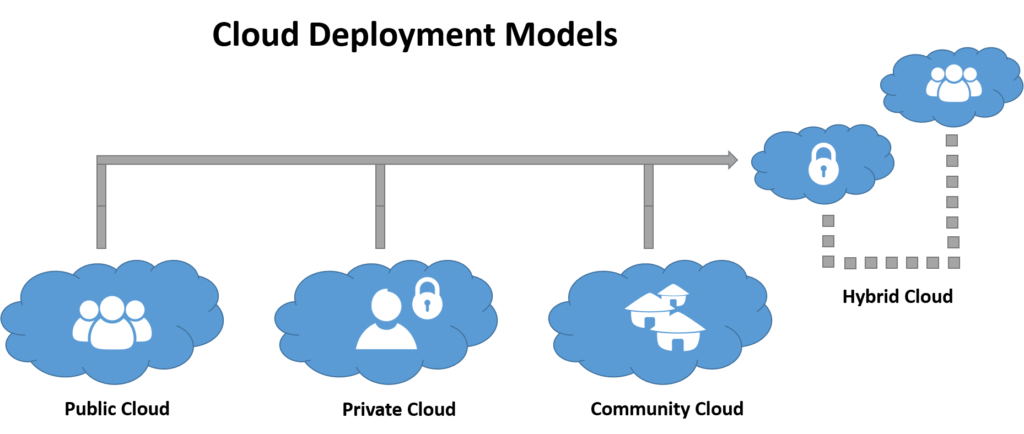
Private clouds are those infrastructures only for sole business/organization, managed internally or by third party and so hosted either internally or externally. Business can be uplifted through private clouds unless data-centers won’t consume gross amount. Private clouds may ask for space, hardware and humans to manage it periodically, which add to cost-management.
Public clouds are the clouds which are freed to the public over the internet. The services are open and maybe free to the public. All the known cloud services like Amazon Web Services, Google Cloud, Microsoft Azure, IBM cloud, Aliyun are public and possess central data centers accessed via internet.
Hybrid clouds is the composition of public cloud and a private environment (private resources). These clouds infer more feasibility and flexibility in accessibility, data security and compliance requirements. Making a private cloud interconnected to a public computing service is an example of hybrids. By this, its possible to extend the capability of a cloud by integration or customization with another cloud service.
Cloud bursting in which private data cloud is burst to public cloud services under its urging need is a kind of hybrid.
Community cloud shares infrastructure between several organizations from a specific community with common concerns (security, compliance, jurisdiction, etc.), whether managed internally or by a third-party, and either hosted internally or externally. The costs are spread over fewer users than a public cloud (but more than a private cloud), so only some of the cost savings potential of cloud computing are realized.
Types of Cloud Computing:
Cloud computing offer the services through three main service models: software-as-a-service (Saas), infrastructure-as-a-service (Iaas), platform-as-a-service (Paas).
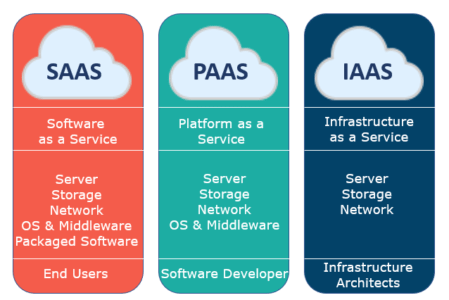
Software-as-a-Service (SaaS): The accessing of software services and databases through licensure is called SaaS. It is referred as “on-demand software” that is availed on ‘pay-as-you-go’ basis or subscription free. Microsoft Office 365, Adobe use this model.
Infrastructure-as-a-service (IaaS): IaaS providers, such as AWS, supply a virtual server instance and storage, as well as APIs that let users migrate workloads to a virtual machine (VM). Users have an allocated storage capacity and can start, stop, access and configure the VM and storage as desired. IaaS providers offer small, medium, large, extra-large and memory- or compute-optimized instances, in addition to customized instances, for various workload needs.
Platform-as-a-service (PaaS): PaaS vendors cater the facility of developing the applications through toolkits and channels like programming languages, operating system, database and web server. The consumer does not manage or control the underlying cloud infrastructure including network, servers, operating systems, or storage, but has control over the deployed applications and possibly configuration settings for the application-hosting environment.
Read also: How Amazon Web Services earn in billions with Cloud Computing?
Features and Advantages
- Agility can be improved, as computing paves the way of adding or provisioning the resources on to the cloud.
- Performances by the employees in organizations can be monitored through web services as the system interface.
- Productivity hitches as it provides access to virtual devices that can be remotely operated and interrupted. The use of google drive, OneDrive aids in the entry to the files via internet. This avoids the inadequate storage in devices and helps out for backing the files too.
- It also offers big businesses huge cost-saving potential. Before the cloud became a viable alternative, companies were required to purchase, construct, and maintain costly information management technology and infrastructure. Companies can swap costly server centers and IT departments for fast Internet connections, where employees interact with the cloud online to complete their tasks.
- Security can improve due to centralization of data, increased security-focused resources, etc., but concerns can persist about loss of control over certain sensitive data, and the lack of security for stored kernels.
Limitations
- Limited customization options, not fitting to the consumer’s legal needs at times.
- Privacy and confidentiality are big firms to the limitations of cloud computing. Consumers are prone to insecurity of storing sensitive data not encrypted for use.
- Security: As it works from a central server, any illegal access to it (if hacked) can be a total devast of the organization. Also, any catastrophe to the server-area would also lead to the downside of the computing.
Epilogue:
Cloud computing is still an emerging technology that has an evenly scope and market worth to billions. Major companies in the world like Google, Microsoft, Amazon, Alibaba employ cloud for businesses and make the optimum out of it.
References:
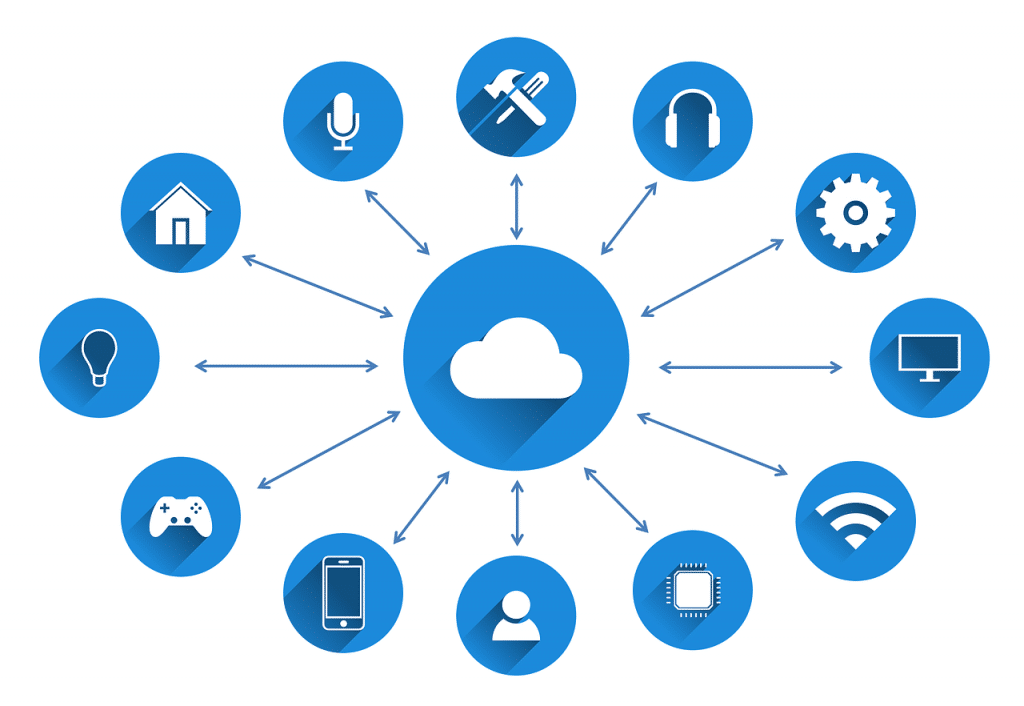
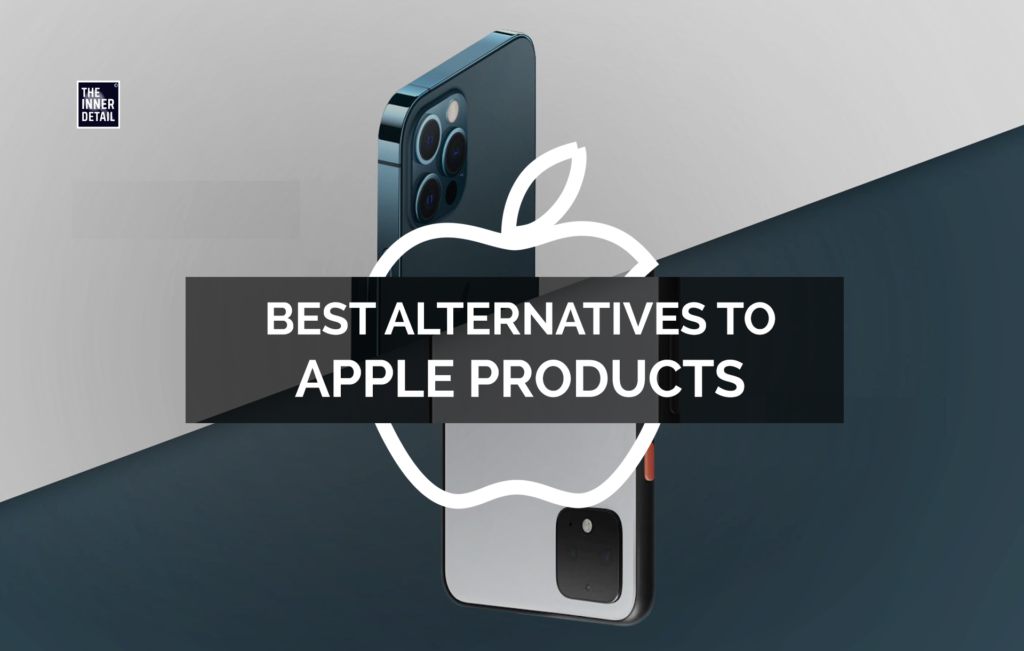
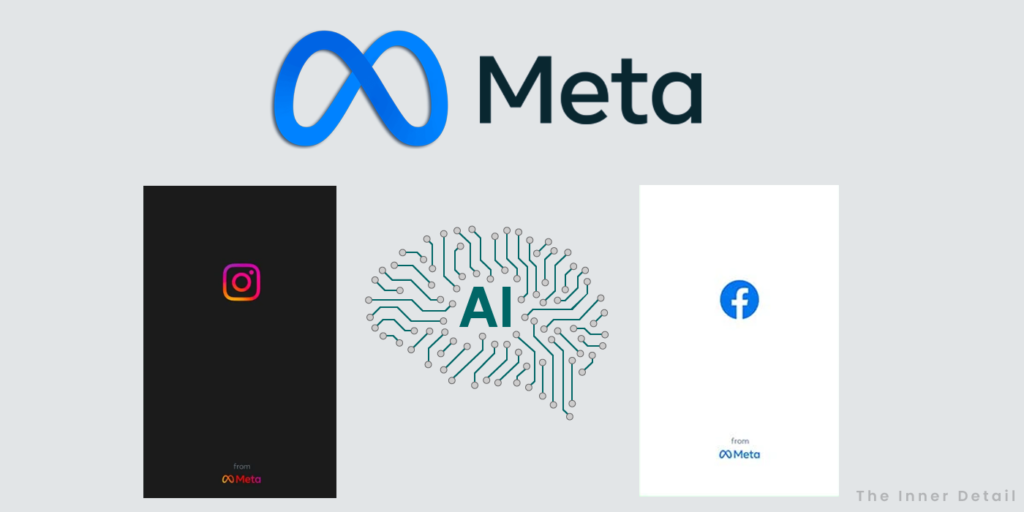




Pingback: Future Technology Trends & Opportunities – The Inner Detail